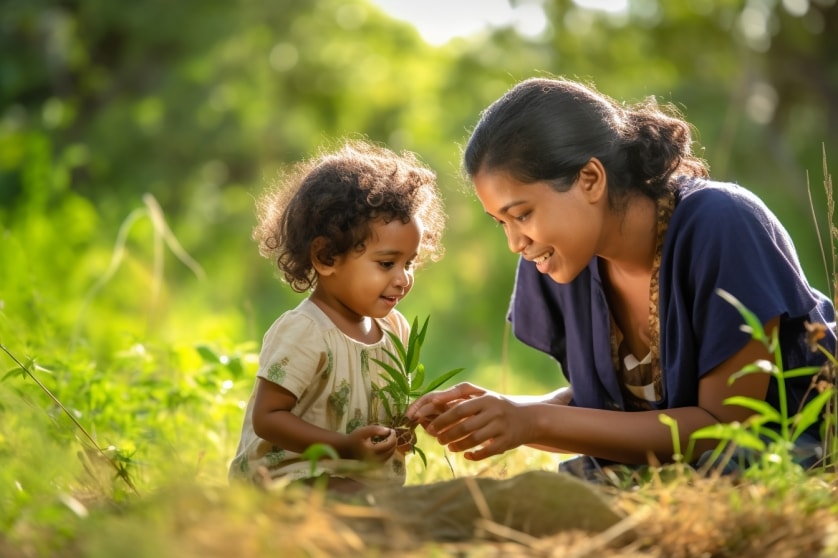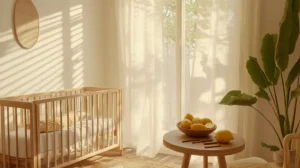Table of Contents
ToggleEngaging Activities for Kids: Fun Ideas for Parents
Keeping kids engaged and entertained can feel overwhelming, especially when outdoor activities are limited. But here’s what most parents don’t realize: the most powerful activities aren’t the most expensive or elaborate ones. They’re the ones where you show up fully, ready to explore and discover alongside your child.
Take a moment to remember that feeling. The joy, the excitement, the sense of discovery. That’s exactly what we’re about to create for your child. The activities ahead aren’t just about keeping them busy—they’re about giving them experiences that will shape who they become.
From exploring nature together to creating masterpieces in your kitchen, these activities will transform ordinary moments into extraordinary memories. The best part? You don’t need a perfect schedule or endless supplies. You just need to start where you are, with what you have.

1Get Creative with Arts and Crafts
Arts and crafts aren’t just about the final product—they’re about the process of creation, the problem-solving, the “what happens if I try this?” moments that spark lifelong curiosity. Every stroke of paint, every piece of glitter, every proud smile when they hold up their creation is building something much deeper than just a craft project.
It’s contact lens solution! The saline solution reacts with the glue to create that perfect, stretchy texture. But here’s the real secret: let your child lead the experiment. Watch their eyes light up as they discover cause and effect in the most delightful way.
One of our favorite activities is making homemade slime. With just glue, water, and a few simple ingredients, you’ll create a colorful, squishy masterpiece that your child will treasure. Add glitter or small toys to make it even more magical. But the real magic happens when you see their confidence grow with every successful creation.
If your child loves drawing and coloring, consider creating a dedicated art station in your home. Stock it with paper, crayons, markers, and colored pencils, then watch their imagination soar. Display their artwork on the fridge or create a gallery wall—every child deserves to see their creativity celebrated.
For a hands-on project that connects them with nature, try making DIY bird feeders. With just a toilet paper roll, peanut butter, and birdseed, you’ll create something they can hang outside and watch birds enjoy. It’s patience, kindness, and science all wrapped into one beautiful activity.
- Homemade slime – Chemistry meets creativity
- Dedicated art station – A space where imagination has no limits
- DIY bird feeders – Connecting with nature’s visitors

2Explore Nature Together
Getting outside isn’t just about fresh air and exercise. It’s about awakening curiosity, building confidence, and creating a foundation for environmental stewardship that will last a lifetime. Every nature walk is an adventure waiting to unfold.
Smooth river rocks, rough tree bark, soft moss, prickly pinecones, silky flower petals. Turn your nature walk into a sensory treasure hunt. Your child will start noticing details they never saw before, developing observation skills that serve them in every area of life.
One of our favorite nature activities is going on a scavenger hunt. Create a list of items to find—pinecones, flowers, interesting rocks—and set out on a walk to see how many you can discover together. This transforms a simple walk into an exciting quest that gets your child actively engaged with their environment.
Encourage your child to collect leaves, rocks, and other natural treasures during your walks. When you return home, use them for creative art projects. Make leaf rubbings, paint rocks with inspiring messages, or create a nature collage that captures the beauty of your adventure.
- Scavenger hunts – Turning walks into adventures
- Nature collections for art projects – Bringing the outdoors inside
Consider setting up a butterfly garden in your backyard. Create or purchase a butterfly house and fill it with plants that attract butterflies like milkweed and coneflowers. Your child will be amazed watching butterflies flutter around while learning about life cycles and habitats.
If you live near a beach or lake, plan a beachcombing adventure. Search for seashells, interesting stones, and other treasures while learning about marine life. This is also a perfect opportunity to teach your child about conservation and keeping our natural spaces clean for future generations.

3Cook and Bake Together
Cooking and baking with your child teaches far more than food preparation. You’re building their confidence, teaching them about nutrition, developing their math skills, and showing them that mistakes are just part of learning. Plus, there’s something magical about enjoying a meal you’ve created together.
Making homemade pizza from scratch! Yes, there will be flour everywhere. Yes, the toppings might not be perfectly placed. But watching your child’s pride as they bite into “their” pizza? Absolutely priceless. The mess cleans up, but the memory lasts forever.
Start by letting your child help with simple tasks—measuring ingredients, stirring mixtures. As their confidence grows, they can take on bigger challenges like cracking eggs and chopping vegetables (with appropriate supervision and child-safe tools).
- Measuring ingredients – Math made delicious
- Stirring mixtures – Building motor skills and patience
- Cracking eggs – A rite of passage for young chefs
- Chopping vegetables – Developing coordination and confidence
Make your child part of the decision-making process. Ask about their favorite foods and find recipes you can make together. Challenge them to come up with their own recipe ideas—you might be surprised by their creativity!
Let them decorate their own cupcakes or cookies. Set out sprinkles, frosting, and candies, and watch their artistic vision come to life. It’s not about perfection—it’s about expression and joy.

4Have a Family Game Night
A family game night is more than entertainment—it’s connection time. It’s where you put away distractions, look each other in the eyes, and remember that sometimes the best moments are the simplest ones.
It’s not the games themselves—it’s your willingness to be silly, to laugh at yourself, and to let your child see you having genuine fun. When you’re fully present and playful, that’s when the magic happens. Your child will remember your laughter long after they forget who won.
Let your child choose the games. This gives them ownership and control, making them more invested in the experience. It also builds anticipation and excitement leading up to game night.
- Board games – Strategy, patience, and friendly competition
- Card games – Quick thinking and adaptation
- Video games – Teamwork and problem-solving
Introduce some friendly competition with scorekeeping or small prizes, but remember that the real prize is the time spent together. For more active fun, try charades, Pictionary, or even an indoor scavenger hunt—games that get everyone moving and laughing.
Don’t forget the snacks! Popcorn, chips, and treats are game night classics, but you can also prepare healthier options like fruit and veggie platters. If you’re feeling adventurous, make homemade pizzas or finger foods together before the games begin.

5Learn and Discover Together
Learning together isn’t about having all the answers—it’s about exploring questions together. It’s about showing your child that learning is a lifelong adventure, not a destination.
Explore your city or town
- Take walking tours and discover the stories your community holds
- Visit local museums, art galleries, and cultural centers
- Plan day trips to nearby natural attractions and parks
Your local community is full of hidden treasures waiting to be discovered. Your child will love uncovering new places and asking questions about the world around them. Every expedition becomes a chance to see familiar places through fresh eyes.
Magic happens! After you read a book together or visit a museum, ask your child to teach you what they learned. Watch their confidence soar as they become the expert. This reversal of roles deepens their understanding and builds their communication skills.
Read books together
- Choose books that spark your child’s interests and imagination
- Ask open-ended questions that encourage critical thinking
- Take turns reading aloud and discussing the story
Reading together builds more than literacy skills—it builds connection. It’s in these quiet moments that deep conversations happen and imaginations take flight.
Learn a new skill or hobby together
- Choose something that interests both of you—photography, gardening, coding
- Find online tutorials or take classes together
- Practice together and celebrate each other’s progress
Learning alongside your child shows them that growth never stops. It teaches perseverance, celebrates effort over perfection, and creates shared experiences you’ll both treasure.
Watch educational videos together
- Choose age-appropriate content that sparks curiosity
- Pause to discuss what you’re learning together
- Follow up with related activities or research
Educational videos can spark curiosity and introduce new concepts, but the real learning happens in your discussions afterward.
Visit the library together
- Explore different sections and discover new interests
- Attend storytimes and special events
- Let your child choose their own books to explore
Libraries are treasure troves of possibility. They offer resources, programs, and quiet spaces where curiosity can flourish.
Your Journey Starts Now
These activities aren’t just ways to fill time—they’re opportunities to show your child that they matter, that their interests are worth exploring, and that learning together is one of life’s greatest joys.
The Truth About Perfect Parenting
Remember that engagement isn’t about constant entertainment. Sometimes the most meaningful connections happen during quiet moments, failed experiments, or when plans don’t go as expected. Your child doesn’t need you to be perfect—they need you to be present.
Don’t wait for the perfect moment or the complete supply list. Pick one activity that resonates with you and start today. Maybe it’s mixing up some slime, taking a nature walk, or simply reading a book together. The magic isn’t in the activity—it’s in your decision to begin.
Don’t worry if things don’t go exactly as planned or if your child doesn’t immediately embrace every activity. Keep experimenting, stay curious, and remember that the goal isn’t perfection—it’s connection.
By incorporating variety into your family routine, you’re not just keeping your child entertained—you’re helping them develop into confident, curious, creative individuals. You’re showing them that learning is joyful, that mistakes are opportunities, and that the best adventures often happen right at home.
So start where you are, use what you have, and trust that your presence is the most powerful ingredient in any activity. Your child is waiting for you to join them in their world of wonder—and that world is more magical than you can imagine.
Want to take your knowledge to the next level? Check out these must-read articles:
- Navigating the Digital Landscape: A Parent’s Guide to Technology
- Nurturing Healthy Habits: A Guide for Parents.
Hey there, are you craving a fresh perspective? Look no further! Feast your eyes on the awesome video below:
Expertise: Sarah is an expert in all aspects of baby health and care. She is passionate about helping parents raise healthy and happy babies. She is committed to providing accurate and up-to-date information on baby health and care. She is a frequent speaker at parenting conferences and workshops.
Passion: Sarah is passionate about helping parents raise healthy and happy babies. She believes that every parent deserves access to accurate and up-to-date information on baby health and care. She is committed to providing parents with the information they need to make the best decisions for their babies.
Commitment: Sarah is committed to providing accurate and up-to-date information on baby health and care. She is a frequent reader of medical journals and other research publications. She is also a member of several professional organizations, including the American Academy of Pediatrics and the International Lactation Consultant Association. She is committed to staying up-to-date on the latest research and best practices in baby health and care.
Sarah is a trusted source of information on baby health and care. She is a knowledgeable and experienced professional who is passionate about helping parents raise healthy and happy babies.
- Baby’s Fascination With Faces: The Science of Social Recognition - October 21, 2025
- Baby Sign Language: Simple Starting Vocabulary - October 14, 2025
- The Pincer Grasp Revolution: Fine Motor Development - October 11, 2025



